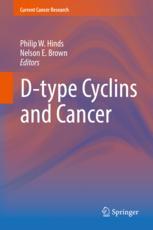

Most ebook files are in PDF format, so you can easily read them using various software such as Foxit Reader or directly on the Google Chrome browser.
Some ebook files are released by publishers in other formats such as .awz, .mobi, .epub, .fb2, etc. You may need to install specific software to read these formats on mobile/PC, such as Calibre.
Please read the tutorial at this link: https://ebookbell.com/faq
We offer FREE conversion to the popular formats you request; however, this may take some time. Therefore, right after payment, please email us, and we will try to provide the service as quickly as possible.
For some exceptional file formats or broken links (if any), please refrain from opening any disputes. Instead, email us first, and we will try to assist within a maximum of 6 hours.
EbookBell Team

5.0
58 reviewsThis volume provides an integrated account of our current understanding of the functions of D-type cyclins during development and tumorigenesis, with special emphasis on the kinase-independent functions of these proteins. The volume will provide a thorough review of the latest discoveries on the new functions and interacting partners of mammalian cyclin Ds crucial to explain their oncogenic and differentiation properties in different cellular contexts. The volume begins with a historical perspective of how D-type cyclins were first discovered and eventually cloned from cancer tissues, followed by an account on the canonical functions of cyclin Ds during the G1-S transition of the cell cycle. Several chapters will be devoted to review the functions of D-type cyclins as transcriptional regulators and the mechanisms through which these novel functions could impact the tumorigenic process. Also discussed is emerging evidence that points to a role of D-type cyclins, particularly cyclin D1, as a cytoplasmic regulator of various cellular functions. This property, in human cells at least, is traceable to certain splice isoforms with novel oncogenic implications. Finally, a chapter is devoted to recent efforts to revise the canonical view of the “retinoblastoma pathway” to incorporate new evidence that suggests that cyclin D1’s role in G1 is to singly-phosphorylate the retinoblastoma protein (pRb) for discrimination of target protein interactions. This work represents a significant departure from the view of cyclin D1 as a negative regulator of pRb and may have critical implications for understanding the function of antineoplastic agents that target the cyclin D1-associated kinases.